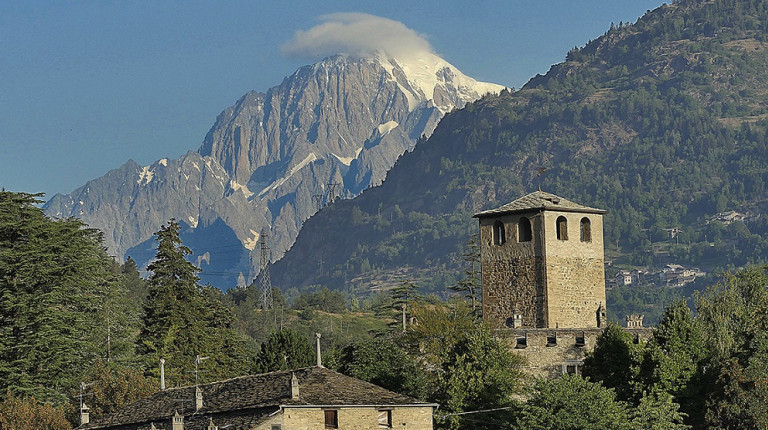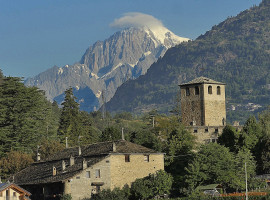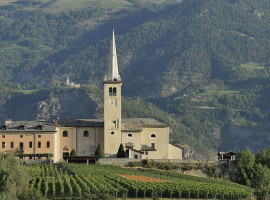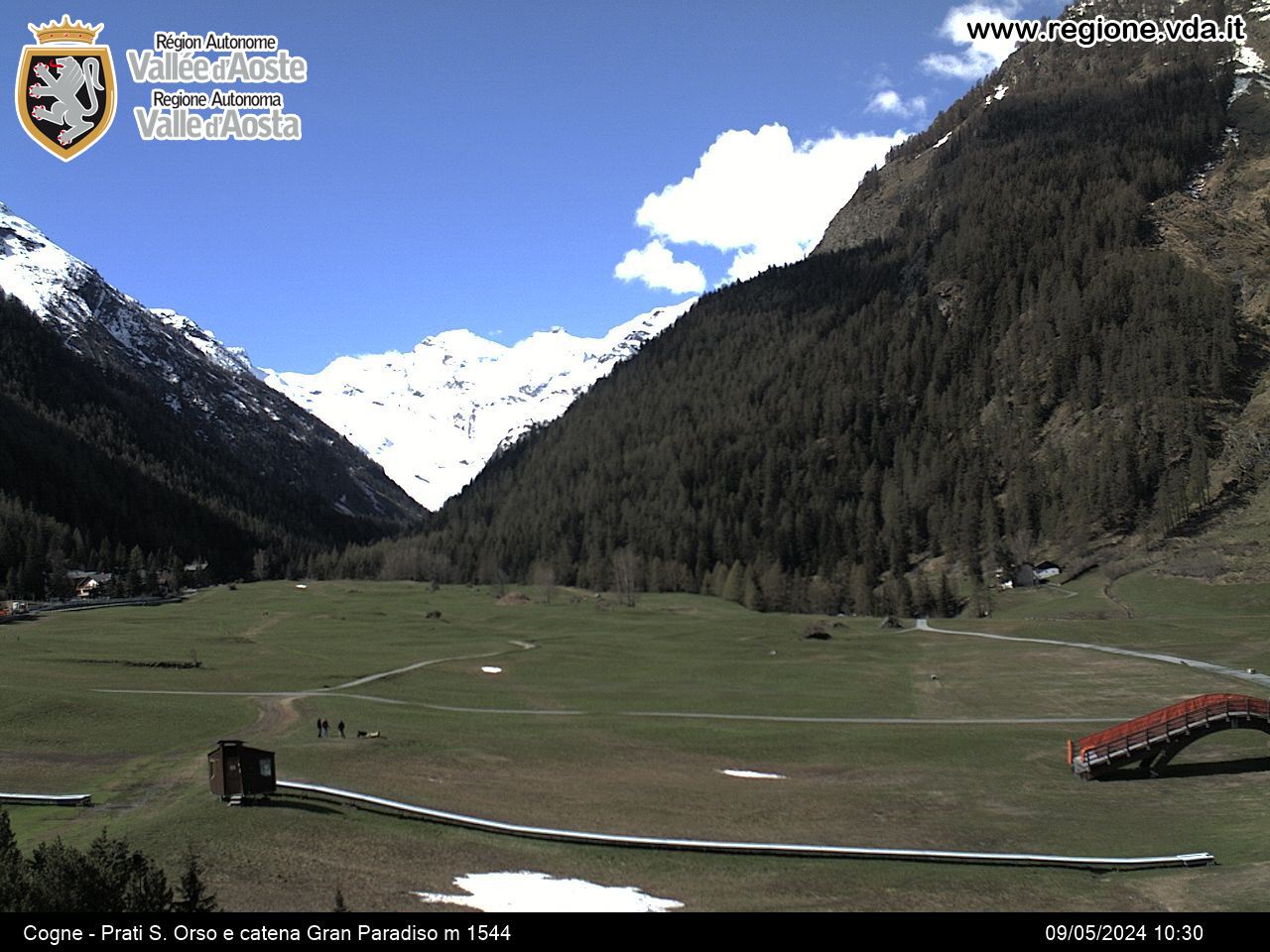
Introd
Introd is a medium mountain village and occupies the lower part of the Rhêmes and Valsavarenche valleys, at the entrance to the Gran Paradiso National Park. The place name ‘Introd’ (‘entre-eaux’: between the waters) originates from the geographical position of its main town (880 m above sea level), which lays between the Dora di Rhêmes and the Savara stream.
The main town of Introd is made up of the villages in the valley, which are connected by two bridges built over the Dora di Rhêmes: Lo pon noù (the new bridge), a true masterpiece of architecture that was built during the First World War over a chasm of more than 80 m, and Lo pon vioù (the old bridge), built between the years 1827-28, which until 1916 represented the only access route to the main town, Valsavarenche and the Val di Rhêmes.
Introd Castle was built by the nobleman Pierre Sarriod d'Introd around 1260, and his descendants inhabited it until 1910. The first nucleus probably dates back to the 12th century and originally consisted of a square keep surrounded by walls. Pierre Sarriod enlarged the originary castle, which, following modifications in the 15th century, took on the almost rounded polygonal shape that still distinguishes it from other Valdostan castles.
Next to the castle is a magnificent stone and wood complex, once used by the Sarriod d'Introd family as a granary. Built in the mid-15th century, it represents one of the rare examples of all-wood constructions typical of the architecture of the late Middle Ages in the Aosta Valley. The two doors are fitted with wrought iron locks, both dating back to the time of construction, one of which is particularly beautiful and represents a castle.
The Ôla is a very old construction that was used for many centuries as a stable, stud and barn by the Lords of Introd. Due to its originality, this construction influenced the architecture of the houses of the notables throughout the Aosta Valley.
Next to the castle park stands the Chapel of the Holy Shrine (lo Sèn-Chouéo), one of the oldest chapels in the Aosta Valley.
Maison Bruil in Introd is one of the greatest examples of rural architecture in the Gran Paradiso area and hosts the exhibition Conserver le souvenir...se souvenir pour conserver. The visit allows visitors to retrace the techniques that our ancestors developed over the centuries to improve and implement the use of food products in their territory and, at the same time, contribute to ‘preserving’ an intangible asset of inestimable value: memory.
The village of Introd is known to be a place loved by the Popes. Pope St. John Paul II and Pope Benedict XVI have chosen the village of Les Combes to spend their holidays, alternating relaxing excursions in the mountains with intense moments of prayer, reading and reflection, favoured by the quiet and beauty of the place.
The Maison Musée Jean-Paul II was created to pay homage to Saint John Paul II and houses an exhibition of objects that belonged to the Pope, enriched by numerous photographs taken during the most intense moments of his long pontificate.
Introd does not only offer much from a cultural point of view: its position at the foot of the Gran Paradiso National Park means that, in the summer season, a network of trails excellent for trekking or mountain-biking trips unwinds from Introd. In winter, Introd offers itineraries for ‘snowshoeing’ and is centrally located with respect to the main Alpine and Nordic skiing stations in the Aosta Valley.









